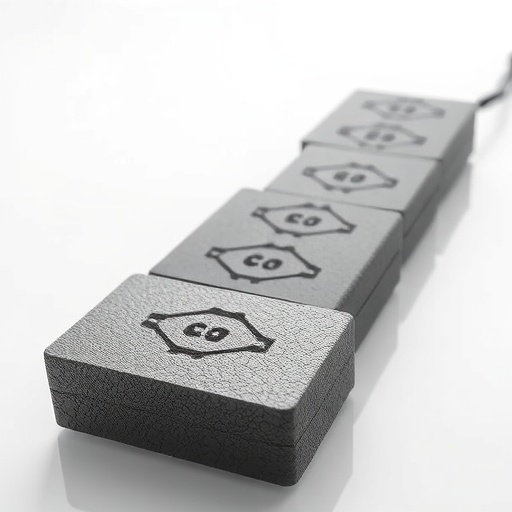As the global energy landscape continues to evolve, the search for scalable, economical energy storage solutions has intensified. Sodium-ion batteries (SIBs) are garnering significant attention as a promising alternative to their lithium-ion counterparts, particularly for grid-scale applications. Despite their potential, the energy density of SIBs has traditionally fallen short when compared to lithium-ion technologies. Recent research, however, shines a light on a transformative approach to enhancing the performance of sodium-ion batteries by utilizing the unique characteristics of closed pores within hard carbon anodes. A groundbreaking review led by Professor Hongshuai Hou at Central South University underscores the pivotal role these closed pores play in unlocking high-energy, high-efficiency sodium-ion battery systems.
The choice of hard carbon (HC) as an anode material for sodium-ion batteries stems from its affordability and ability to maintain stable cycling performance. However, the full potential of hard carbon has remained elusive due to its amorphous microstructure. Traditional research models have predominantly focused on the effects of open pores and graphitic interlayers on sodium ion storage. These models have been inadequate in addressing the low-voltage plateau capacity, a crucial factor in improving the energy density of SIBs. The newly established framework posited by Professor Hou and his team revolves around an innovative understanding of closed pores, which are microscale cavities that are accessible to sodium ions but not to gas molecules. This unique property allows for the formation of quasi-metallic sodium clusters, which significantly enhances the overall reversible capacity, reaching levels of up to 500 mAh g-1, in addition to achieving an impressive initial Coulombic efficiency greater than 90%.
The study details the mechanisms and processes involved in the evolution of pore structures during the carbonization of hard carbon. Researchers define a spectrum of pore types beginning with open pores, which during high-temperature treatment can transition into closed pores. This classification includes quasi-closed pores, which provide partial accessibility, and fully closed pores, characterized by their total unavailability to the electrolyte. Understanding this evolutionary timeline is invaluable, as it lays the groundwork for the development of tailored structural properties that can directly influence sodium ion transport and the formation of the solid electrolyte interphase (SEI).
A pivotal insight from the research highlights the dual existence of sodium ions within closed pores, presenting in both ionic and quasi-metallic states. This unique behavior is key due to the phenomenon of desolvation that occurs at the entrances of these closed pores, where sodium ions transition into a densely clustered formation. This clustering effect not only facilitates enhanced ionic conductivity but also plays a critical role in minimizing the formation of the SEI inside the closed pores, which subsequently promotes higher initial Coulombic efficiencies.
The comprehensive review proposes sophisticated engineering strategies focused on optimizing the formation of closed pores in hard carbon anodes. These strategies encompass various methodologies, including precursor modulation, which involves techniques such as cross-linking and esterification, as well as the incorporation of pore-forming agents like carbon dots, metal oxides, and KOH. The control of carbonization through methods such as two-step heating and flash Joule heating further adds to the toolkit available for refining the anode structure.
Illustrative examples from the review highlight impressive innovations in this field. For instance, starch microspheres etched with carbon dioxide showcased an exemplary reversible capacity of 487.6 mAh g-1, whereas a formulation involving ZnO-templated phenolic resin achieved an astonishing capacity of 501 mAh g-1. Furthermore, the application of flash Joule heating presents a groundbreaking method for inducing ultrafast and tunable pore closure, positioning it as a state-of-the-art approach to optimizing the microstructure of hard carbon anodes.
Looking towards the future, the authors outline a visionary framework for advancing the design of hard carbon materials at a molecular level. This paradigm involves the integration of kinetic and thermodynamic principles for pore formation, alongside electrolyte engineering aimed at optimizing the desolvation processes and the behavior of the SEI. A unified theory of active sites is also proposed, emphasizing the interconnected roles of structural defects, interlayer formations, and pore architecture in enhancing sodium ion storage capabilities.
The significance of this research transcends mere structural design; it encapsulates a paradigm shift in how we perceive the functionality of closed pores, reclassifying them as critical electrochemical active sites. By mastering the art of designing and controlling these structures, researchers may bridge the currently existing energy density gap between sodium-ion and lithium-ion battery technologies.
As Professor Hou and his team continue their pioneering investigation into the domain of sodium-ion batteries, the potential for creating advanced battery systems with improved energy output, longevity, and cost-effectiveness appears promising. The findings of this review not only provide a solid foundation for future research but also pave the way for practical advancements in energy storage solutions that could have profound implications for the transition to sustainable energy systems worldwide.
In summary, the transformative potential of closed pores within hard carbon anodes is garnering renewed interest in the field of sodium-ion battery research. By focusing on these structural intricacies that influence sodium ion behavior, the research community is poised to unlock the next generation of high-performance energy storage systems that could one day rival established lithium-ion technologies.
Subject of Research: Closed pores in hard carbon anodes for sodium-ion batteries
Article Title: Comprehensive Understanding of Closed Pores in Hard Carbon Anode for High‑Energy Sodium‑Ion Batteries
News Publication Date: 7-Jul-2025
Web References: [Not available]
References: [Not available]
Image Credits: Siyang Gan, Yujie Huang, Ningyun Hong, Yinghao Zhang, Bo Xiong, Zhi Zheng, Zidong He, Shengrui Gao, Wentao Deng, Guoqiang Zou, Hongshuai Hou, Xiaobo Ji.
Keywords: Sodium-ion batteries, hard carbon, closed pores, energy storage, electrochemical active sites, carbonization, pore formation.




